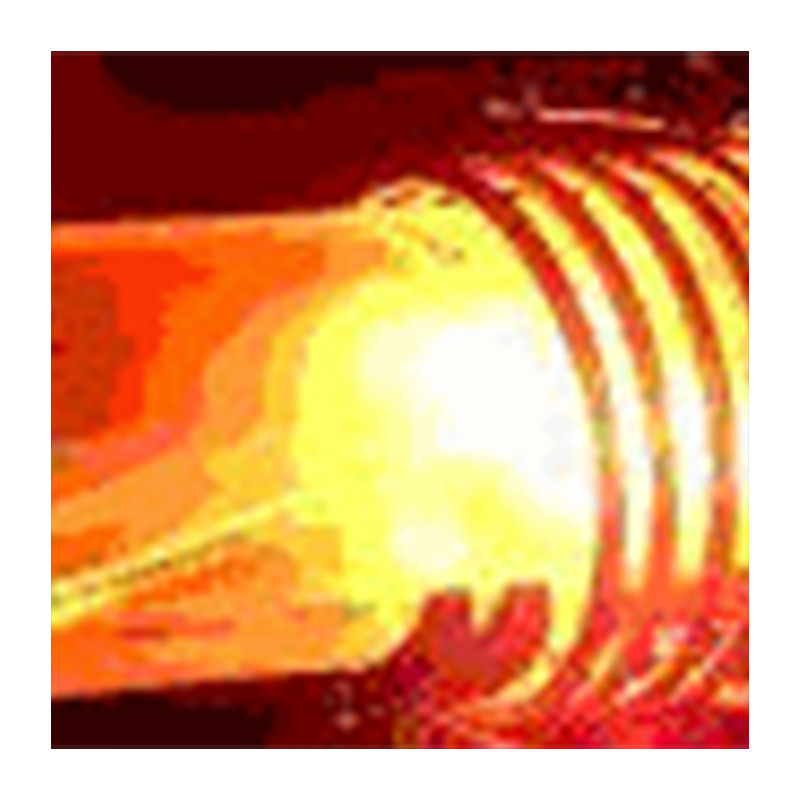

Jūs turite būti prisijungę
Category


Nuotraukos yra skirtos tik informaciniams tikslams. Peržiūrėkite produkto specifikaciją
please use latin characters
Although induction heating is normally used with metals or other conductive materials, plastics and other non-conductive materials can often be heated very effectively by using a conductive metal susceptora material which is heated as a result of its presence in the induction field, then passes its heat to the workpiece. The susceptor is used to transfer heat to the target part through conduction or radiation.
Graphite is frequently used as a susceptor because it offers machinability, high resistivity (ideal for induction), and a temperature range up to 3000°C (5430°F). Susceptors can also be made from Molybdenum, Silicon Carbide, Stainless Steel, Niobium, Aluminum, and other conductive materials. The susceptor can be made in the form of a crucible, disk, tube, a layer in the material, or whatever form best suites the application. Some example applications include:
Modern induction heating provides reliable, repeatable, non-contact and energy-efficient heat in a minimal amount of time. Solid state systems are capable of heating very small areas within precise production tolerances, without disturbing individual metallurgical characteristics.
When heating a susceptor, solid state RF induction power supplies provide accuracy and speed. During heating, temperature ramping can be controlled by using optical pyrometers or thermocouples to form a closed loop system. Uniform surface temperatures can be achieved with careful coil design.
Typical RF power supplies for susceptor heating range from 1 to 20kW, depending on the parts and application requirements.
Ar Jūs domina šis produktas? Ar Jums reikia papildomos informacijos ar individualaus pasiūlymo?
tu turi būti prisijungęs
Although induction heating is normally used with metals or other conductive materials, plastics and other non-conductive materials can often be heated very effectively by using a conductive metal susceptora material which is heated as a result of its presence in the induction field, then passes its heat to the workpiece. The susceptor is used to transfer heat to the target part through conduction or radiation.
Graphite is frequently used as a susceptor because it offers machinability, high resistivity (ideal for induction), and a temperature range up to 3000°C (5430°F). Susceptors can also be made from Molybdenum, Silicon Carbide, Stainless Steel, Niobium, Aluminum, and other conductive materials. The susceptor can be made in the form of a crucible, disk, tube, a layer in the material, or whatever form best suites the application. Some example applications include:
Modern induction heating provides reliable, repeatable, non-contact and energy-efficient heat in a minimal amount of time. Solid state systems are capable of heating very small areas within precise production tolerances, without disturbing individual metallurgical characteristics.
When heating a susceptor, solid state RF induction power supplies provide accuracy and speed. During heating, temperature ramping can be controlled by using optical pyrometers or thermocouples to form a closed loop system. Uniform surface temperatures can be achieved with careful coil design.
Typical RF power supplies for susceptor heating range from 1 to 20kW, depending on the parts and application requirements.
Jūsų atsiliepimo įvertinimas negali būti išsiųstas
Pranešti apie komentarą
Pranešimas apie atsiliepimą išsiųstas
Jūsų pranešimas apie atsiliepimą neišsiųstas
Parašyti savo atsiliepimą
Atsiliepimas išsiųstas
Jūsų atsiliepimas neišsiųstas
